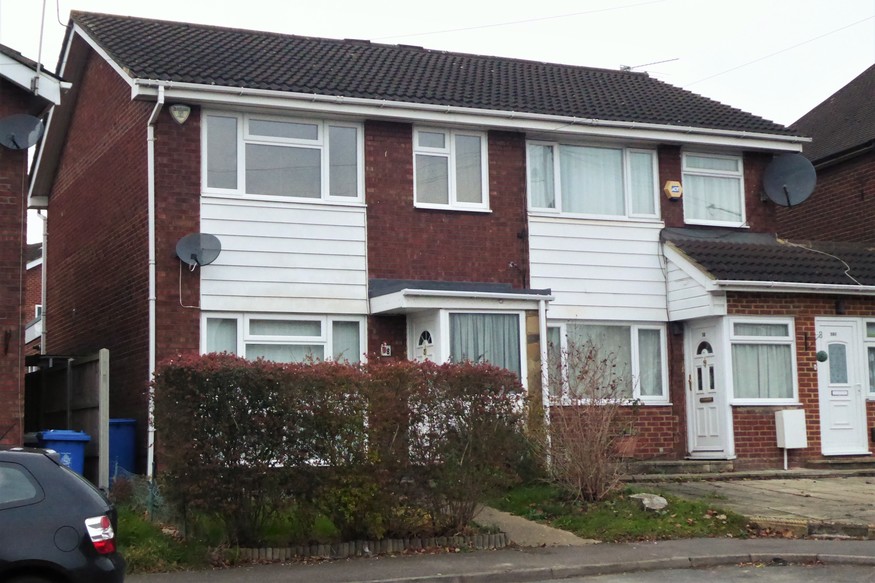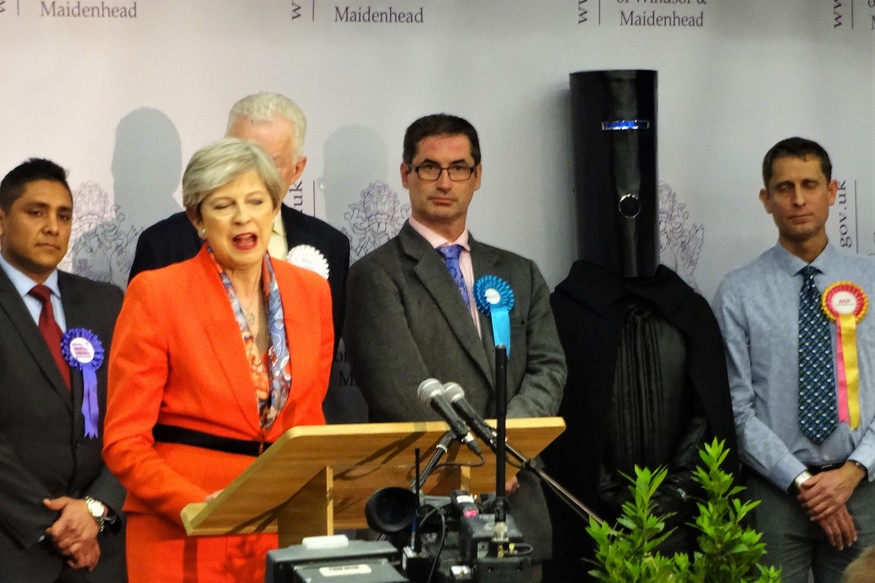
‘West Windsor’? ‘M25 Borders’? ‘Crossrail Heights?’ It’s anyone’s guess what the estate agents will start calling Maidenhead — in a bid to entice Londoners to move there once Crossrail is whizzing to and from it. But you can be damn sure they’ll think of something.
It hasn’t enjoyed the label of ‘fashionable’ since Edwardian times, when its waterfront made it a trendy resort town. However, there’s every reason to assume the allure of, say, a mere 40-minute rail journey to Tottenham Court Road station, will soon give Maidenhead a new lease of life.
Then again, it’s already the most illustrious place you’ve never considered going to. The area is, or has been, the home to no fewer than seven culinary Michelin stars, the country’s oldest football stadium, Theresa May, and — briefly — Girl Power itself. We dusted off the passport and journeyed all the way to Berkshire to understand what all the fuss isn’t about (but perhaps will be one day).
What people from outside England think England looks like

Our tour begins not in the town’s centre — at first glance a businesslike district whose heavy road network is patrolled by rev-happy top-gear dads in pricey sports cars — but down by the river. It’s here that so many of Maidenhead’s visitors idled away their time in days gone by.
By the early twentieth century, Maidenhead was a convenient resort for anyone who couldn’t be bothered to travel as far west from Paddington as Bath. A long-demolished riverfront hotel called Skindles was the haunt of royalty, politicians, actors, and writers — and a place for “illicit liaisons”.
A stroll down the Thames path to Ray Mill Island — the dreamy home to a pub, café, gardens, and a 600-year-old weir — is the stuff of pure property-envy. Houseboats gently bob and multi-million-pound piles tower over the waterfront. The idyllic stretch feels like a throwback to the lives of river-folk in a different century, and it’s not hard to see why the tourists came in droves.
Although it’s an unlikely destination for a holiday nowadays, the town does receive its fair share of ‘down-from-London’ daytrippers, thanks to a village that's just downstream of it.

Beautiful old Bray is a curious place. Chefs in their whites scamper about, disappearing into converted medieval cottages and inns — those buildings now forming the unlikely campus of one of the country’s culinary capitals. This foodie pilgrimage site is shared by the empires of Heston Blumenthal (three restaurants) and the Roux family (one, though more historic). Between them, the celebrity chefs have claimed some seven Michelin stars.
At the centre of it all is the Fat Duck, Blumenthal’s establishment (in)famous for such flavour pairings as snail porridge. The current menu — presented not as a menu but as a ‘map’ — includes on in its sixteen-course itinerary the likes of toast sandwiches, and a crab & passionfruit 99-flake.

“The map is holiday-themed, and acts as a kind of framework for diners to put their own memories on top of,” explains head chef Jonny Lake. “The food here gets you reminiscing about going on holiday and doing this or that on the beach as a child.”
The Duck’s latest nostalgic vibe seems to fit its surroundings. Lake agrees. “Somewhere like Bray is what people from outside England think England looks like. But the good thing is that we’re not exactly stuck in the middle of nowhere.”
Indeed, the village is reachable from central Maidenhead by a walk through a charmingly bedraggled nature reserve. (No fat ducks — but some skinny herons, and even a swan or two.) And now, Blumenthal and co are licking their lips at the prospect of a new rail link which brings new areas in reach and makes dining in Bray feel like less of what Lake calls a “commitment”.
Slough’s poor cousin?

It’s apt that the beneficiary of a snazzy new rail link should be somewhere that grew up as a transport hub; a key bridging point over the Thames. Maidenhead got its first such structure in the 1200s — a creaky wooden thing — and then a new stone bridge in 1772. Isambard Kingdom Brunel’s crusading Great Western Railway arrived early the following century, bringing with it yet another river crossing, with vast arches that bellow with echoes if you so much as exhale into them.
Maidenhead is already superbly connected — as little as 20 minutes from Paddington on a fast train — and being a stop on the Elizabeth line will only serve to solidify what is already a commuter fortress. Perhaps the most radical thing this newest connection could bring with it is a little cautious optimism to a tired town centre.
“The giddy little girl in me loves the idea of getting up to London’s galleries in no time at all,” says Lu Wills, a manager at Bovilles art materials shop. “And so is the fact that new people can come to visit what is the last proper independent art shop in the county.”
Together with a promising-looking craft beer pub-cum-pizzeria just opposite, that colourful emporium — sadly endangered due to the retiring owner putting the premises up for sale — forms a vanguard of what you might call ‘personality’ at the far western end of the high street. Yonder lie chain stores, an under-maximised indoor mall, and the steady blandification that’s engulfed many of the nation’s market towns over the past couple of decades.

A common view is that modern Maidenhead contains an awful lot of wealth without, itself, being a particularly ‘rich’ town to go to. “You overhear people saying that Maidenhead is just [nearby] Slough’s poor cousin,” says Jess Bisset, who serves us a half of local Rebellion IPA in a High Street pub.
“I do think it’s declined in recent years,” she observes. “So, yes, I’m upbeat about Crossrail. But there are question marks still — there’s a lack of attention to how the schools, doctors, and roads will be able to cope with the amount of new housing that’s planning on being provided here.”
Is it a bit odd that there should be challenges like these in the Prime Minister’s very own stomping ground — Theresa May was elected MP for Maidenhead in 1997? A wry smile from the barwoman. “Someone put forward a motion at a recent Pubwatch meeting to get her banned from the town’s pubs,” she says. “It didn’t carry. To be honest, that result is probably in our best interests.”
It’ll rediscover its heyday

To behold the modern centre of Maidenhead is to learn little about the history of an area that extends beyond the medieval era even to the days of the Roman occupation. Beyond a nice old Heritage Centre — complete with a surprised woman behind the desk when you open the door — it’s only former pubs on street corners, and evocative street names, that tell of the past.
On leaving behind those centremost streets, things liven up a little. A sightseeing tour includes the town’s imposing Victorian clocktower, a statue of the ‘British Schindler’ (Sir Nicholas Winton, who rescued 669 children from Czechoslovakia before World War Two broke out), a lovely old barn turned into the Norden Farm Arts Centre, and the former residence of five big wannabes: the unassuming semi that all five Spice Girls were crammed into in the early 1990s while still honing their act.

And then there’s this place. York Road Stadium is, according to the Football Association, the oldest football stadium in continuous use in the country. Perhaps even the world, too. It’s been there since 1871 and is built of bricks, mortar, and generation upon generation of agony and ecstasy.
On the day we visit Maidenhead United, chairman Peter Griffin is barely able to contain his smiles. A purple patch over the last five years has seen the original MUFC (sorry, Manchester United…) reach a club-record high, the fifth tier of English football.
“You should hear the noise here now on match days,” Griffin beams. “Non-league football still has that atmosphere that the big clubs used to have on their terraces. And what we are is a community club that’s interested in reaching out to the town. We coach 700 or 800 local kids here every week.”

Behind the floodlights, JCBs lurk. A regeneration of the local area heralds thousands of new flats, as well as leisure facilities, and potentially even a marina to the disused waterways that trickle behind the stadium’s east stand. Aware of the high value of its real estate, the club did actively look at one point to sell its historic pitch to developers.
“I’m glad we stayed where we are though,” says Griffin. “With the ambitions this club has, a central location is vital. It’s good for the town, too. Footfall is up by a third in the shops on a Saturday.
“It’s just frustrating that the centre has lagged behind as long as it has. Hopefully it’ll rediscover its heyday thanks to Crossrail. We already get some London football fans coming here to get a more authentic experience than they might get at a big club in the city.”
Once middling, but starting to find its feet. Not yet bothering Europe’s elite, but with aspirations. It’s all too easy to draw parallels between team and town. As the next honorary borough of West London, mid-table Maidenhead isn’t there just yet — but it could be on the cusp of something bigger.
Postscript: message from a Maidenhead dignitary

While the PM was nowhere to be seen around Maidenhead’s Conservative Club when we visited, her one-time constituency rival Lord Buckethead was only too pleased to share with us his favourite local haunts, as chosen while out and about on the 2017 campaign trail.
Place to drink. “The Maiden’s Head pub. Simply put, the quiz at this fine hostelry is top-drawer. Perhaps if Mrs May had spent more time here, honing her general knowledge, she would not be in such a pickle during her Brexit negotiations.”
Place to shop. “Wilko in the town centre, if only because the Labour candidate chose to hide inside this shop instead of talking to me about our respective manifestos, including my plans for the reintroduction of Ceefax.”
Place to unwind. “The Magnet is the only local indoor recreational facility for me, because this was the battleground for round three of Lord Buckethead vs British Prime Ministers. And I am getting ever closer to tasting victory. 249 Maidonians made the smartest choice of their lives and powered me to my record performance.”



